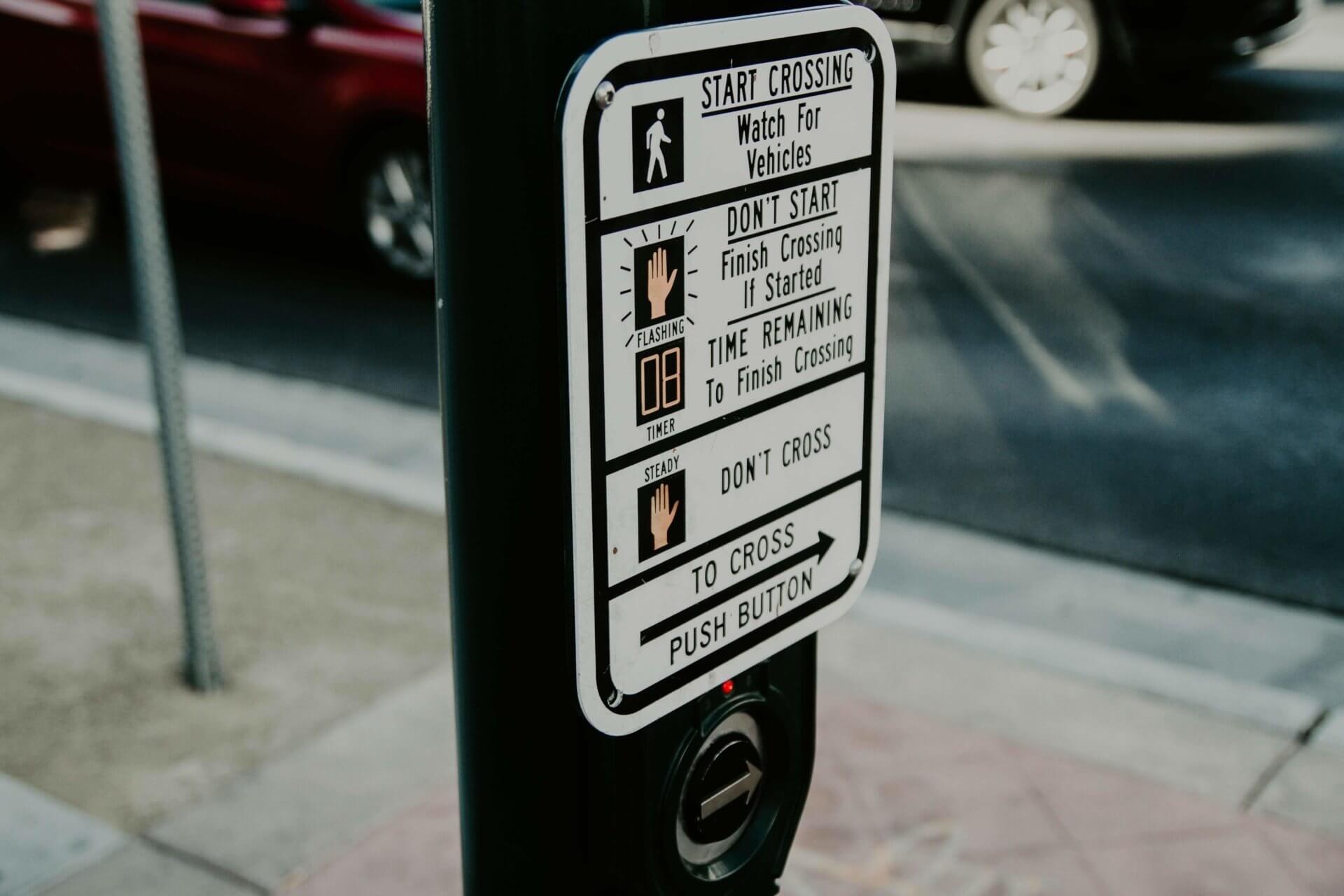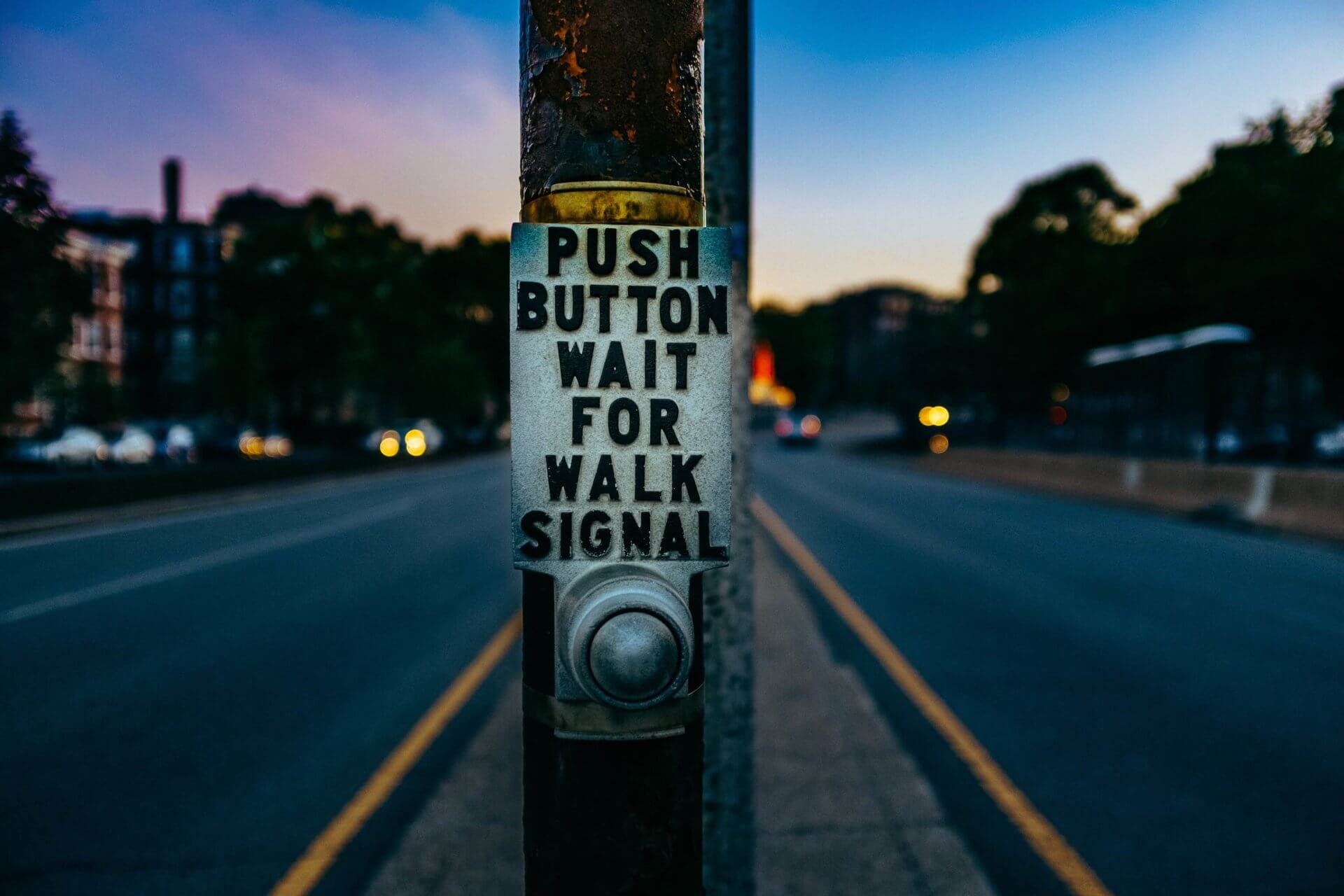
What Are the Regulations Concerning APS in Montreal?
200 Accessible Pedestrian Signals can be found throughout Montreal. These devices help visually impaired people to cross the street safely by activating an audible message.
The municipal council of Montreal has full responsibility for APS installation and maintenance in the City while taking into account national standards and guidelines.
As a road decision-maker of the city of Montreal you will find in this article all the information you need to know about APS regulation.
State Final Guidelines for Accessible Pedestrian Signals
In May 2008, the Transportation Association of Canada (TAC) has issued Final Guidelines for Accessible Pedestrian Signals that update the accessible pedestrian signal provisions within the TAC Manual of Uniform Traffic Control Devices for Canada (MUTCDC).
These guidelines do not constitute standards but provide a set of stand-alone national guidances to uniform installation, operation and maintenance instructions necessary to meet the Accessible Pedestrian Signal needs of people with vision loss in Canada.
Ideally, funding levels for APS should be set to accommodate local needs. Potential APS sites must be prioritized for installation as part of a program, or a list of requested sites.
The final guidelines include a number of factors that are indicators of a need for APS such as:
⊗ Intersection safety, including intersection configuration, width of crossing, and vehicle speeds;
⊗ Pedestrian usage, including the number of potential users, proximity to pedestrian generators and transit;
⊗ Traffic conditions;
⊗ Difficulty in crossing the road without the use of APS.
Bill C-81: An Act to ensure a barrier-free Canada
Bill C-81 Statutes of Canada Chapter 10 “An Act to ensure a barrier-free Canada” was ratified on July 21th 2019.
“This Act is to be carried out in recognition of, and in accordance with, the following principles:
⊗ all persons must have barrier-free access to full and equal participation in society, regardless of their disabilities;
⊗ all persons must have meaningful options and be free to make their own choices, with support if they desire, regardless of their disabilities;
⊗ laws, policies, programs, services and structures must take into account the disabilities of persons, the different ways that persons interact with their environments and the multiple and intersecting forms of marginalization and discrimination faced by persons;”
The implementation of this national act will probably soon lead to new regulations for APS installation and characteristics throughout the country.
Local laws of Montreal
Montreal’s road network is composed of approximately 2300 intersections equipped with traffic lights, of which 200 is equipped with Accessible Pedestrian Signals. The Municipal Powers Act provides that the municipality has jurisdiction over public roads. Management of APS is not the responsibility of the Government of Quebec or Canada.
The City of Montreal is therefore responsible for installing and maintaining all traffic lights.
According to the legislative framework in force, the traffic lanes fall into two categories: the arterial network and the local network. In 2016, 1711 intersections were part of the arterial network and 575 of the local network.
Since 2015, the municipal council has jurisdiction over traffic lights located on the city’s local and arterial network under section 85.5 of the Charter of Ville de Montreal.
As the instance responsible for the management and maintenance of public roads, the City must respect the standards established in the Highway Safety Code Chapter C-24.2. These are the standards for the manufacture and installation of traffic lights established by the Ministry of Transport, Sustainable Mobility and Transport Electrification recorded in Volume V – Road Signs.
During the 2000s, the Department of Roads, Transport and Infrastructures has denounced poor maintenance of traffic lights causing regular breakdowns. In 2004, the City began an initial phase of upgrading traffic lights as part of the Transportation Plan for the Island of Montreal. Adopted in 2008, the Plan announced orientations in several areas prioritizing pedestrians by improving the safety of walking and adopting the Vision Zero project aimed at reducing road accidents by 40% by bringing APS to standard.
In 2013, the authorities reiterated their commitment to accentuate the installation of APS in the city. The upgrading program “Traffic lights and traffic management equipment” was registered in 2015 as a priority program by the Office of Projects and Capital Programs (BPPI).
APS characteristics
From a legal point of view, since 2008 the standards required by the Ministry and the Canadian Electricity Code are applicable to the City of Montreal. The City, the Department and the Canadian Electrical Code therefore impose common requirements regarding the characteristics of the APS units.
The main APS characteristics can be found in the Final Guidelines for Accessible Pedestrian Signals.
APS installation
The installation of APS, as well as pedestrian lights, bicycle lights and bus priority lights, are internal standards. The Division of Exploitation and Arterial Network (DERA) has produced a guide in addition to the Ministry standards called “Signaux Sonores DT-2002” to standardize in detail the installation of APS at intersections equipped with traffic lights.
Without going too far in the technical specifications, the APS standards provide, among other things:
1. The permanent emission of a beep in the immediate vicinity of each activation button, in order to facilitate the identification.
2. Production of a confirmation tone when the audible signal is commanded for the next cycle.
3. The installation, on both sides of the pedestrian crossing, in its center line, and at a suitable height, of speakers coming into operation only when the APS has been activated, and playing a characteristic melody throughout the time when the crossing of pedestrians is allowed, a rhythm on 4 notes in the engagement phase, and a rhythm on 3 notes in phase of release. This melody is played alternately on both sides of the pedestrian crossing, to allow the pedestrian to maintain a trajectory in a straight line.
4. When several APS are installed at the same crossroads, the “Melody of Canada” is installed for those of the East-West axis and the “Cuckoo” for those of the North-South axis. Research and experiments are currently underway to improve the parameters of the “Cuckoo”.
5. When an APS is in use on a given crosswalk, the movement of pedestrians can not be thwarted by any vehicular movement; the right turn on a red light is prohibited at all times, and turns on green light, if any, are permitted only outside the cycle where the audible signal is heard.
Local associations recommendations
On September 12, 2015, by the unanimous will of its General Assembly, the Regroupement des Aveugles et Amblyopes du Québec fully supported Quebec’s standards for APS, and expressed its desire to maintain its mandatory and universal nature.
The association strongly invited the Ministry of Transport of Quebec and the Quebec Ministry of Municipal Affairs to facilitate the installation of new APS by participating in their financing alongside the municipality.
They are also encouraging research, experimentations and technological watch to change the current standard, and invite the Ministry of Transport to provide technical and financial support.
media

The Municipal Powers Act provides that the municipality has jurisdiction over public roads. Management of APS is not the responsibility of the Government of Quebec or Canada. The City of Montreal is therefore responsible for installing and maintaining all traffic lights.
writer

Zoe Gervais
Content Manager
stay updated
Get the latest news about accessibility and the Smart City.
other articles for you

Open Data Is Key to Fostering Universal Accessibility
Open data represents an opportunity for cities to reach universal accessibility. It shows the missing links of the mobility chain.
Our Audio Beacons Guide the Blind and Visually Impaired at the Helsinki Subway
The Helsinky subway improved their audio signage system by installing on demand and remotely activated audio beacons.
7 Good Reasons to Install Audio Beacons at Your Public Transport Network
Audio beacons are an efficient way to provide more autonomy to blind and visually impaired people. They can easily use public transport.

Will Remote Activation Become the Norm for Accessible Pedestrian Signals?
More and more cities like New York have been exploring remote activation to trigger accessible pedestrian signals.
share our article!
more articles

Disability Statistics in the US: Looking Beyond Figures for an Accessible and Inclusive Society
Disability Statistics in the US: Looking Beyond Figures for an Accessible and Inclusive Society Around 61 million adults in the United States live with a disability. Diving into disability statistics in the US will help us know exactly who is concerned and what...
Our Audio Beacons Guide the Blind and Visually Impaired at the Helsinki Subway
Our Audio Beacons Guide the Blind and Visually Impaired at the Helsinki SubwayOur audio beacons equip the new line of the Helsinki subway in Finland. They help blind and visually impaired people locate the points of interest of a station. For users with visual...

Will Remote Activation Become the Norm for Accessible Pedestrian Signals?
Will Remote Activation Become the Norm for Accessible Pedestrian Signals?Without pushbutton, there are no accessible pedestrian signals. That’s how APS work in the U.S. But more and more cities have been exploring remote activation like New York City. The Department...

Hearing Impaired People: a Multitude of Profiles for Different Needs
Hearing Impaired People: a Multitude of Profiles for Different Needs Did you know that hearing impaired people have several profiles and that the way they identify themselves is important? You may be familiar with deaf and hard of hearing people but for each of...
NEVER miss the latest news about the Smart City.
Sign up now for our newsletter.
Unsubscribe in one click. The information collected is confidential and kept safe.
powered by okeenea
The French leading company
on the accessibility market.
For more than 25 years, we have been developing architectural access solutions for buildings and streets. Everyday, we rethink today’s cities to transform them in smart cities accessible to everyone.
By creating solutions ever more tailored to the needs of people with disabilities, we push the limits, constantly improve the urban life and make the cities more enjoyable for the growing majority.



